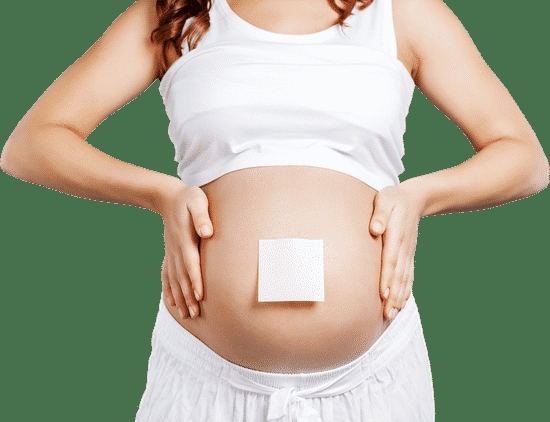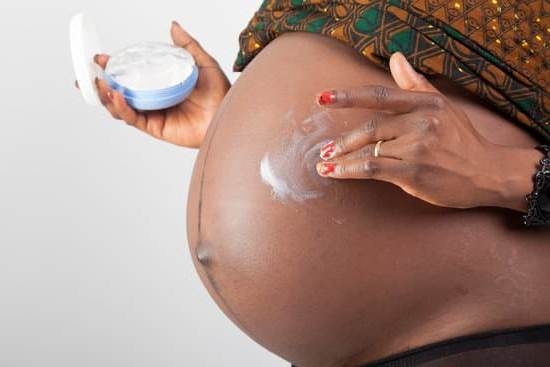Pregnancy is a time of many changes for a woman’s body, including the possibility of developing a pregnancy rash. It is essential to recognize the signs and symptoms of this condition to seek proper treatment and relief. So, what does pregnancy rash look like? In this article, we will delve into the causes, types, symptoms, diagnosis, treatment options, home remedies and when to seek medical attention for pregnancy rash.
When it comes to pregnancy rash, understanding the underlying causes is crucial. Hormonal changes, increased blood flow, stretching of the skin, and immune system alterations during pregnancy can contribute to the development of these rashes. Additionally, pre-existing skin conditions or allergic reactions may also manifest as pregnancy rashes.
There are several common types of pregnancy rashes that women may experience during gestation. These include pruritic urticarial papules and plaques of pregnancy (PUPPP), intrahepatic cholestasis of pregnancy (ICP), and prurigo gestationis. Each type presents with distinct characteristics and symptoms that expectant mothers should be aware of to effectively manage their condition throughout pregnancy.
What Causes Pregnancy Rash?
Pregnancy rash, also known as Pruritic Urticarial Papules and Plaques of Pregnancy (PUPPP), is a common skin condition that affects expecting mothers. While the exact cause of pregnancy rash is not fully understood, it is believed to be related to the stretching of the skin as the belly expands during pregnancy.
Hormonal changes and immune system responses may also play a role in triggering this condition. Additionally, some women may be more prone to developing pregnancy rash if they have a history of allergies or skin conditions.
Research suggests that first-time mothers are more likely to experience pregnancy rash compared to women who have had multiple pregnancies. The rash typically begins in the stretch marks on the abdomen and then spreads to other parts of the body, such as the thighs, buttocks, and arms.
It usually starts in the third trimester but can appear earlier in some cases. The itching associated with pregnancy rash can be quite intense and uncomfortable for many women, leading them to seek relief through various treatment options.
Although pregnancy rash does not pose any serious risks to the mother or the baby, it can significantly impact the quality of life for pregnant women. Understanding the potential causes of this condition can help expectant mothers take proactive steps to prevent or manage pregnancy rash effectively.
Consulting with a healthcare provider is essential for proper diagnosis and treatment based on individual needs and symptoms. Taking care of one’s skin during pregnancy can also help minimize the risk and severity of developing a pregnancy rash.
| Cause | Description |
|---|---|
| Stretching of the skin | As the belly expands during pregnancy |
| Hormonal changes | Fluctuations in hormone levels during pregnancy |
| Immune system responses | Possible triggers for skin reactions |
Common Types of Pregnancy Rash
During pregnancy, hormonal changes can lead to various skin conditions and rashes. It is essential for pregnant women to be aware of the different types of pregnancy rashes that may occur, their symptoms, and how to manage them effectively. Here are some common types of pregnancy rash that expecting mothers may encounter:
Pruritic Urticarial Papules and Plaques of Pregnancy (PUPPP)
PUPPP is a common and harmless pregnancy rash that typically occurs during the third trimester. It usually starts as small red bumps on the abdomen and spreads to other parts of the body like the thighs, buttocks, and arms. The itching associated with PUPPP can be severe and uncomfortable for expecting mothers. Although PUPPP does not pose any risk to the baby, it is important to consult a healthcare provider for relief from symptoms.
Prurigo of Pregnancy
Prurigo of pregnancy is another type of rash that can develop during pregnancy, characterized by itchy bumps or nodules on the skin. This condition typically affects areas such as the legs, arms, and abdomen. The itching can intensify at night, disrupting sleep for pregnant women. While prurigo of pregnancy may resolve on its own after childbirth, seeking medical advice is crucial for proper management.
Pemphigoid Gestationis
Pemphigoid gestationis is a rare autoimmune skin disorder that can occur during pregnancy or shortly after giving birth. This condition presents as itchy hives or blisters on the abdomen initially before spreading to other areas like the back, buttocks, and limbs. Pemphigoid gestationis requires medical attention from a dermatologist or obstetrician to prevent complications for both mother and baby.
Being educated about these common types of pregnancy rashes can help expecting mothers better understand their symptoms and seek appropriate treatment when needed. It is essential to consult a healthcare provider if experiencing any discomfort or unfamiliar changes in the skin during pregnancy.
Symptoms of Pregnancy Rash
Pregnancy rash, also known as pruritic urticarial papules and plaques of pregnancy (PUPPP), can manifest in various ways on the skin. These symptoms can vary from person to person, but there are some common signs to look out for if you suspect you have a pregnancy rash. Here are some of the key symptoms associated with pregnancy rash:
- Red, raised bumps or hives on the skin
- Itching and discomfort in the affected areas
- Burning or stinging sensation on the skin
In addition to these common symptoms, some women may also experience blistering, oozing, or flaking of the skin in severe cases of pregnancy rash. It is essential to pay attention to any changes in your skin during pregnancy and consult with your healthcare provider if you notice any unusual symptoms.
Moreover, pregnant individuals may notice that the rash tends to develop around stretch marks on the abdomen and can spread to other parts of the body such as the thighs, buttocks, and arms. Understanding these symptoms can help you differentiate a pregnancy rash from other common skin conditions during pregnancy. If you are unsure about what does pregnancy rash look like, seek medical advice for a proper diagnosis and treatment plan.
Diagnosis of Pregnancy Rash
Physical Examination
Diagnosing a pregnancy rash typically starts with a physical examination by a healthcare provider. During this examination, the doctor will examine the rash closely, looking for specific characteristics that may help in identifying the type of rash present. They will look at the color, texture, distribution, and pattern of the rash to determine its probable cause. In some cases, additional tests may be required to confirm the diagnosis.
Biopsy
In certain instances where the diagnosis is unclear or if more information is needed to determine the cause of a pregnancy rash, a skin biopsy may be performed. A small sample of affected skin tissue is taken and sent to a laboratory for analysis. The results of the biopsy can provide valuable insights into the underlying condition causing the rash, helping healthcare providers develop an appropriate treatment plan.
Allergy Testing
If there is suspicion that an allergic reaction may be contributing to the pregnancy rash, allergy testing may be recommended. This can involve patch testing or blood tests to identify specific allergens that could be triggering the rash. Understanding any allergies present can help in avoiding future exposure and preventing flare-ups of the pregnancy rash. In some cases, allergy testing may also guide treatment decisions for managing the rash effectively.
Treatment Options for Pregnancy Rash
During pregnancy, dealing with a rash can be uncomfortable and frustrating. However, there are several treatment options available to help alleviate the symptoms and manage pregnancy rash effectively. It is essential to consult with a healthcare provider before starting any treatment to ensure the safety of both the mother and the baby. Here are some common treatment options for pregnancy rash:
- Topical creams: Applying topical corticosteroid creams or ointments can help reduce inflammation and itching associated with pregnancy rash. These creams should be used as directed by a healthcare provider to avoid any harmful side effects.
- Antihistamines: Oral antihistamines can help relieve itching and discomfort caused by pregnancy rash. It is crucial to use antihistamines that are safe for use during pregnancy and consult a healthcare provider before taking any medication.
- Moisturizers: Keeping the affected area well-moisturized can help soothe dryness and prevent further irritation. Opt for fragrance-free and hypoallergenic moisturizers to avoid triggering any allergic reactions.
In some cases, more severe or persistent pregnancy rash may require additional treatment options such as phototherapy or systemic corticosteroids. It is essential to follow the guidance of a healthcare provider when exploring these options to ensure they are safe during pregnancy. Remember that each individual’s experience with pregnancy rash may vary, so it is essential to find the right treatment approach that works best for you.
Remember that managing pregnancy rash is not just about treating the symptoms but also about addressing the underlying cause of the rash. By working closely with your healthcare provider and following their recommendations, you can effectively manage pregnancy rash and minimize its impact on your overall well-being during this special time in your life.
Home Remedies for Pregnancy Rash
Pregnancy rash, also known as pruritic urticarial papules and plaques of pregnancy (PUPPP), can be an uncomfortable experience for expecting mothers. However, there are several home remedies that can help alleviate the symptoms and provide some relief.
One common symptom of pregnancy rash is intense itching, which can be managed with simple remedies such as oatmeal baths or applying cold compresses to the affected areas. Oatmeal has soothing properties that can help reduce itchiness and inflammation, while cold compresses can provide temporary relief from itching.
Another effective home remedy for pregnancy rash is applying calamine lotion or aloe vera gel to the affected skin. Calamine lotion has cooling and anti-inflammatory properties that can help reduce redness and irritation, while aloe vera gel can soothe the skin and promote healing.
It is important to choose products that are safe for use during pregnancy and consult with a healthcare provider before trying any new remedies. Additionally, wearing loose-fitting clothing made from soft, breathable fabrics like cotton can help prevent further irritation and allow the skin to breathe.
Incorporating foods rich in vitamin E into your diet may also have benefits for managing pregnancy rash. Vitamin E is known for its skin-nourishing properties and antioxidant effects, which can help improve overall skin health. Some good sources of vitamin E include nuts, seeds, avocados, and spinach.
Staying hydrated by drinking plenty of water throughout the day can also support healthy skin function and reduce itching associated with pregnancy rash. While home remedies may provide some relief, it is essential to seek medical advice if symptoms persist or worsen despite trying these measures.
| Home Remedy | Description |
|---|---|
| Oatmeal Baths | Soothes itchiness and inflammation |
| Aloe Vera Gel | Promotes healing and soothes the skin |
| Vitamin E-rich Foods | Supports healthy skin function |
When to See a Doctor for Pregnancy Rash
While many cases of pregnancy rashes may be mild and easily managed at home, there are instances where it is crucial to seek medical advice and intervention. If you experience symptoms such as severe itching, redness, swelling, or if the rash spreads rapidly across your body, it is important to consult with your healthcare provider. Additionally, if you develop blisters, open sores, fever, chills, or any signs of infection within the rash area, seeking medical attention promptly is necessary.
It is also advisable to see a doctor if the pregnancy rash does not improve with over-the-counter remedies or home treatments. Persistent or worsening symptoms could indicate a more serious underlying condition that requires professional assessment and treatment. Furthermore, if you have a history of skin conditions such as eczema or psoriasis, it is essential to have any new rash evaluated by a healthcare provider to ensure proper management during pregnancy.
In some cases, pregnancy rashes may be indicative of an allergic reaction to certain foods, medications, skincare products, or environmental factors. If you suspect that your rash is triggered by an allergen or irritant substance, consulting with a healthcare provider can help identify the specific cause and recommend appropriate measures to avoid further exposure and prevent recurrent episodes of the rash.
Remember that prompt medical evaluation can provide peace of mind and ensure the best possible care for both you and your baby during pregnancy.
Conclusion
Pregnancy rash can be a common and uncomfortable occurrence for many expectant mothers. It is important to understand what causes pregnancy rash in order to effectively manage it during this special time. From hormonal changes to increased blood flow, there are various factors that contribute to the development of pregnancy rash.
When identifying what does pregnancy rash look like, it is essential to recognize the common types such as pruritic urticarial papules and plaques of pregnancy (PUPPP), impetigo herpetiformis, and prurigo gestationis. These rashes can appear as red bumps, hives, or even blisters on the skin, often accompanied by itching and inflammation. Knowing the symptoms of pregnancy rash will help expectant mothers distinguish it from other skin conditions.
Seeking a proper diagnosis from a healthcare provider is crucial in determining the best treatment options for pregnancy rash. Whether through topical creams, oral medications, or antihistamines, managing the symptoms of pregnancy rash is vital for both the well-being of the mother and the developing baby.
Additionally, exploring home remedies like oatmeal baths, cool compresses, and avoiding known triggers can provide some relief for pregnant women dealing with this condition. As always, consulting with a doctor before trying any treatment is recommended for a safe and effective approach to managing pregnancy rash during pregnancy.
Frequently Asked Questions
Where Do Pregnancy Rashes Appear?
Pregnancy rashes can appear on various parts of the body including the abdomen, breasts, thighs, buttocks, and even hands. These rashes may manifest as red patches, bumps, or blisters.
Is Skin Rash a Symptom of Pregnancy?
Yes, a skin rash can indeed be a symptom of pregnancy. Hormonal changes during pregnancy can make the skin more sensitive and prone to various dermatological conditions like acne, eczema, and heat rashes.
What Does a PUPPP Rash Look Like?
A PUPPP rash, also known as pruritic urticarial papules and plaques of pregnancy, typically presents as red bumps and hives that develop primarily on the abdomen. This type of rash is usually itchy and uncomfortable for pregnant women.

Welcome to my fertility blog. This is a space where I will be sharing my experiences as I navigate through the world of fertility treatments, as well as provide information and resources about fertility and pregnancy.





